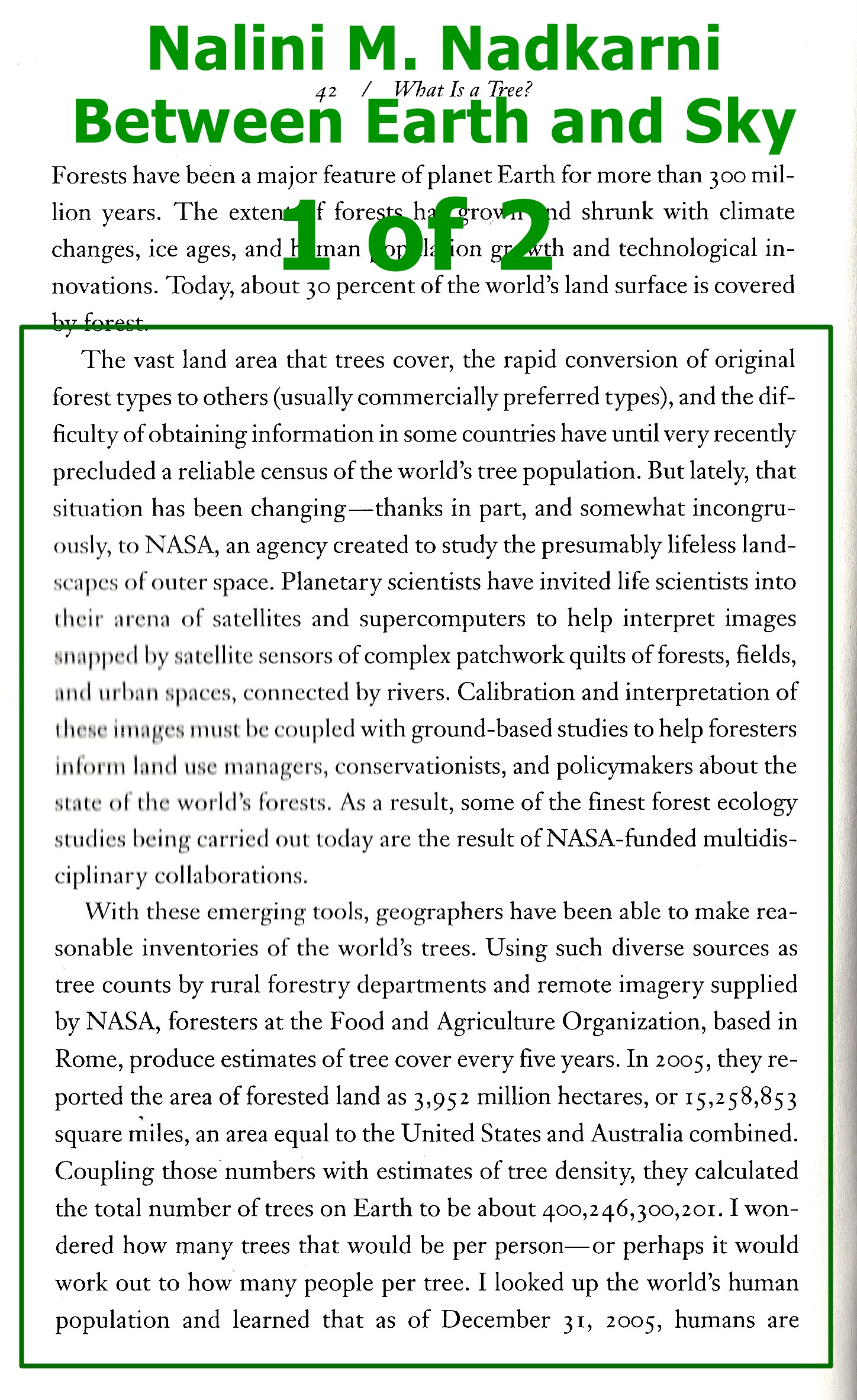
Nalini M. Nadkarni (photo source Univ. of Washington article)
Between Earth and Sky: Our Intimate Connections to Trees. World-renowned canopy biologist Nalini Nadkarni has climbed trees on four continents with scientists, students, artists, clergymen, musicians, activists, loggers, legislators, and Inuits, gathering diverse perspectives. In Between Earth and Sky, a rich tapestry of personal stories, information, art, and photography, she becomes our captivating guide to the leafy wilderness above our heads. Through her luminous narrative, we embark on a multifaceted exploration of trees that illuminates the profound connections we have with them, the dazzling array of goods and services they provide, and the powerful lessons they hold for us. Nadkarni describes trees’ intricate root systems, their highly evolved and still not completely understood canopies, their role in commerce and medicine, their existence in city centers and in extreme habitats of mountaintops and deserts, and their important place in folklore and the arts. She explains tree fundamentals and considers the symbolic role they have assumed in culture and religion. In a book that reawakens our sense of wonder at the fascinating world of trees, we ultimately find entry to the entire natural world and rediscover our own place in it. — from abstract at ResearchGate.net
Link to video: youtu.be/1BS-XUntiLg
Shortlink for this post: wp.me/p2fLMh-3qP


